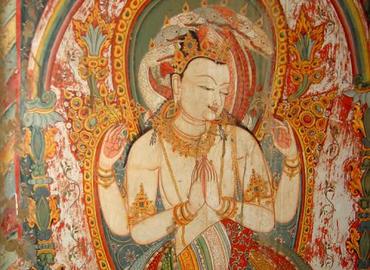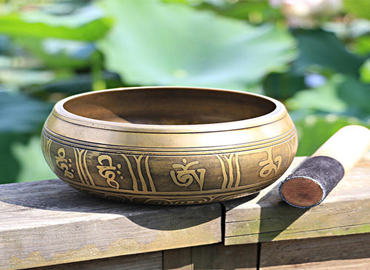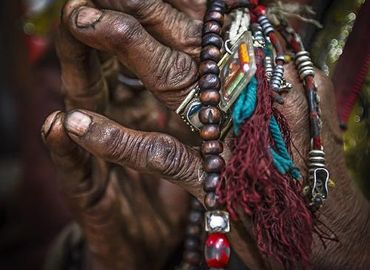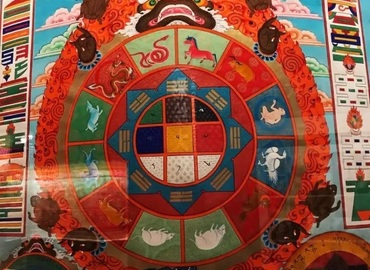Tibetan Butter Sculpture
- Eric
- Last Updated : 05/19/2025
Tibetan Butter Sculpture is a special form of art made of ghee. Fortunately, after the founding of the Bonismo, Tönpa Shenrab Miwoche changed a lot of primitive belief methods, including the way to offer a sacrifice to deities, and so on. The new way is to use Zanba and ghee to form a variety of colored thread disks to replace the animals to be sacrificed, therefore reduce the killing. This is the origin of Dolma and Butter sculpture.
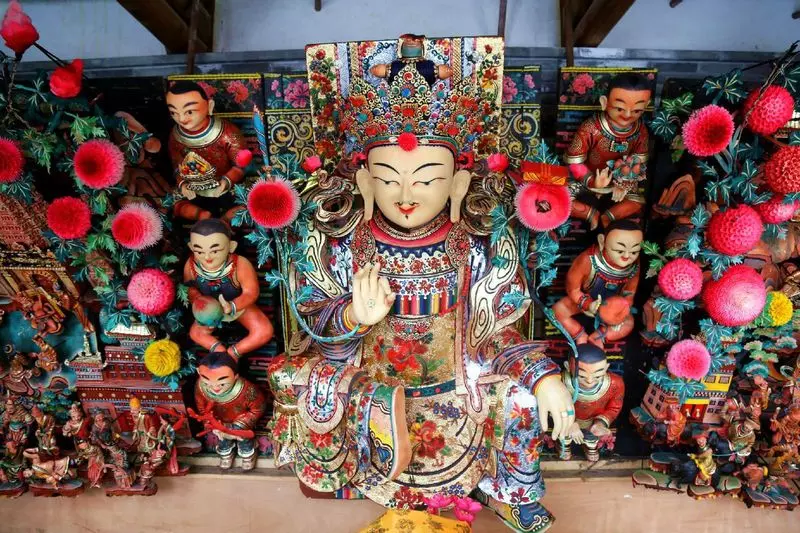
Artistic Value and Religious Status
Dolma and Butter sculpture were widely used as offerings by other Tibetan Buddhist denominations and became a major feature of Tibetan Buddhism. Many of the customs and traditions of modern Tibetans have also been passed down from the ancient Bon religion. Many unique ways of praying of Tibetans are also relics of the ancient Bon religion, such as kora/worshipping/circumambulating the holy mountains/lakes, scattering wind horse flags(Longda), hanging multi-colored prayer flags, engraving Buddhism scriptures on stones, and placing mani piles, divination, worshipping the Dolma plate, butter sculpture, and even using a prayer wheel, etc. All the abovementioned features are now indivisible of Tibetan culture.
Today, you can see butter sculptures in many Tibetan Monasteries. Kumbum Monastery(aka Ta'er Temple), which is located in Xining, Qinghai Province, is well-known for its finest butter sculpture. As one of the "Great Three Arts" of Kumbum Monastery, Butter Sculpture is shown as Buddha statues, figures, landscapes, pavilions, birds and animals, flowers and trees, etc. The collection of butter sculptures in the Kumbum Monastery not only has quite high artistic value and style but also has a grand scale and colorful contents.
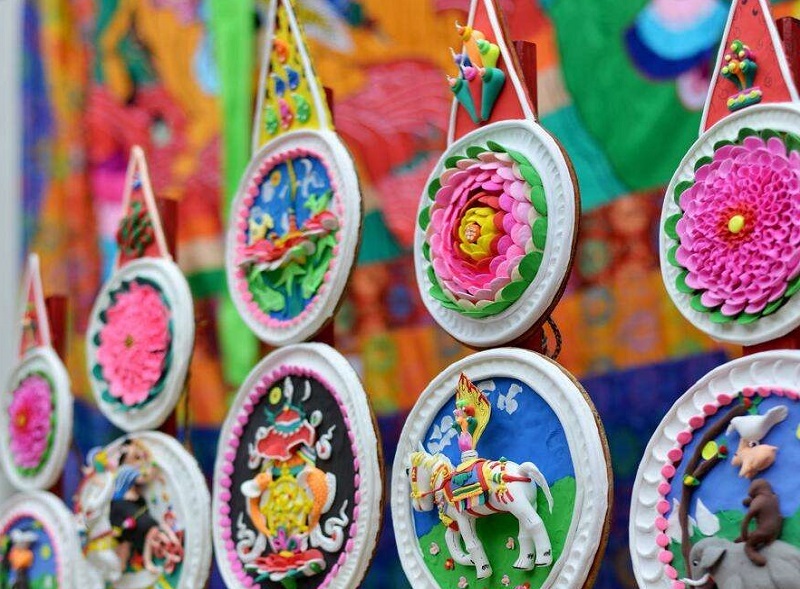
History of Butter Sculptures
It can be dated back to the 1400s during the Ming Dynasty even though its origin was entirely mystical and mysterious. We can look back into its history in two different versions.
First, we were made to believe that since the arrival of the Sakyamuni Buddha statue in Lhasa, the monks planned to adorn it with different flowers to be used for offering during the bleak winter of Tibet. And since getting flowers during this time was difficult, the monks then plan to use Dri (the female yak) butter.
While the second version of the origin of the Tibetan butter sculpture lay with Tsongkhapa (the founder of Gelug sect) according to his dream. He dreamed that the thorns turned to be a bright lamp, the weeds turned into flowers, countless rare treasures, colorful and brilliant. Tsongkhapa then instructed the Tibetan monks to carve a sculpture with butter to successfully visualize his legendary dream. Later, the butter sculpture being displayed everywhere in the Tibetan temples and monasteries.
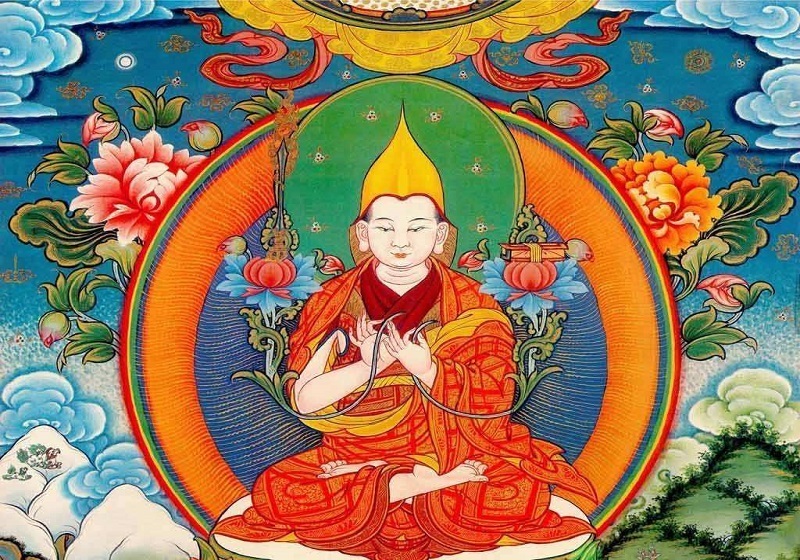
How to Make Butter Sculptures?
Tibetan people have the custom of dedicating butter to temples and monasteries, which are generally only used as Buddha lamps and monks' food. Before the Butter Lamp Festival (the 15th day of the first month of the Tibetan calendar), they paid pure white butter as a tribute to Kumbum Monastery, which's the birthplace of Tsongkhapa. There is a history of making butter sculptures for hundreds of years. Its craft is complex and unique, and it is mostly carried out in winter. The monks kneaded butter into the shape of the embryo made from various mineral dyes and then set up scaffolding in the cold room to complete. In order to keep the styling from melting due to body temperature, the monks need to put their hands into the biting snow water to cool down. That's also the reason why some people say it's cruel art.
Manufacturing is specifically divided into four processes. Firstly, tie frameworks with soft straw bundles and bamboo poles of different shapes. Second, make the embryo by thumping the mixture of previous butter sculptures and plant ash until it can be wrapped in the framework. Then, knead the mineral pigments of various colors into the milky butter to paint the sculptures. Finally, fix sculptures on wooden boards or special basins for display.
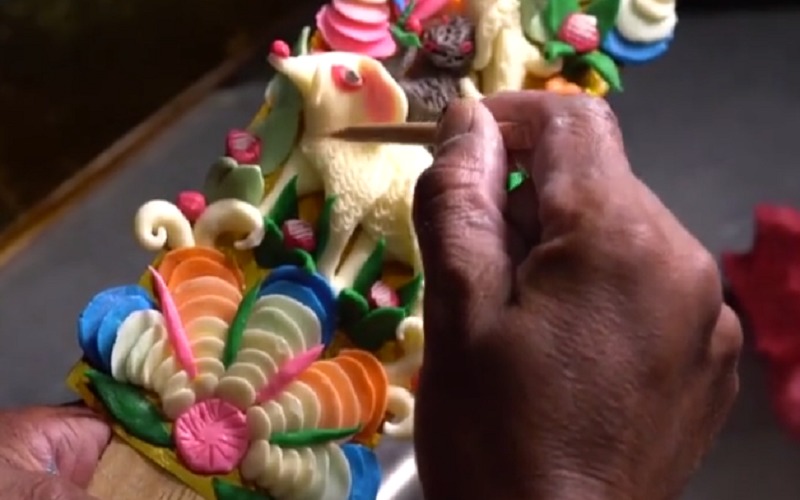
Tibetan Butter Lamp Festival
On the 15th day of the first month of the Tibetan calendar, there's a large-scale Butter Lamp Festival. Created by Tsongkhapa - the founder of the Gelug Sect of Tibetan Buddhism, the butter lamp festival is a portion of the Monlam Prayer Festival, the last day of the commemoration of Buddha’s miracles, and the end of the Tibetan Losar New Year celebration. During the day, people go to various temples and monasteries to pray to the Buddha and offer lamps; at night, thousands of butter lanterns are lit in front of Jokhang Temple, as well as on Barkhor Street in Lhasa. There are colorful images of various deities, figures, birds and beasts, flowers, trees, etc., ranging from a few centimeters to several stories high in size. The warm atmosphere symbolizes one of the grand festivals in Tibet.
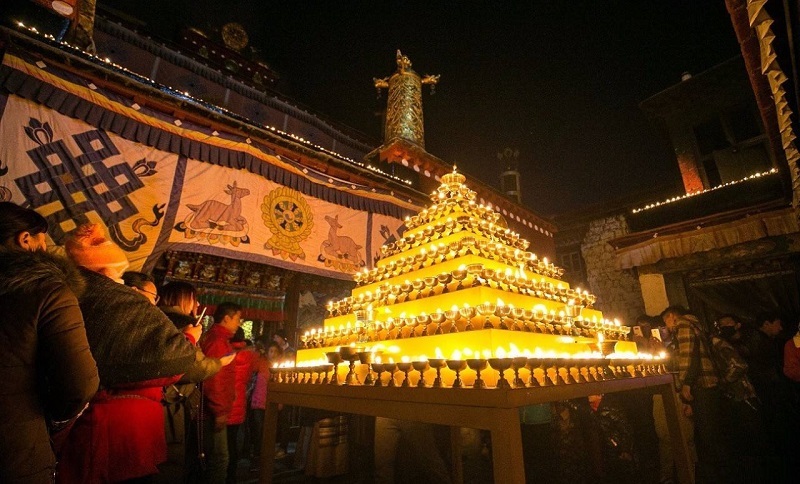
Email response within 0.5~24 hours.


